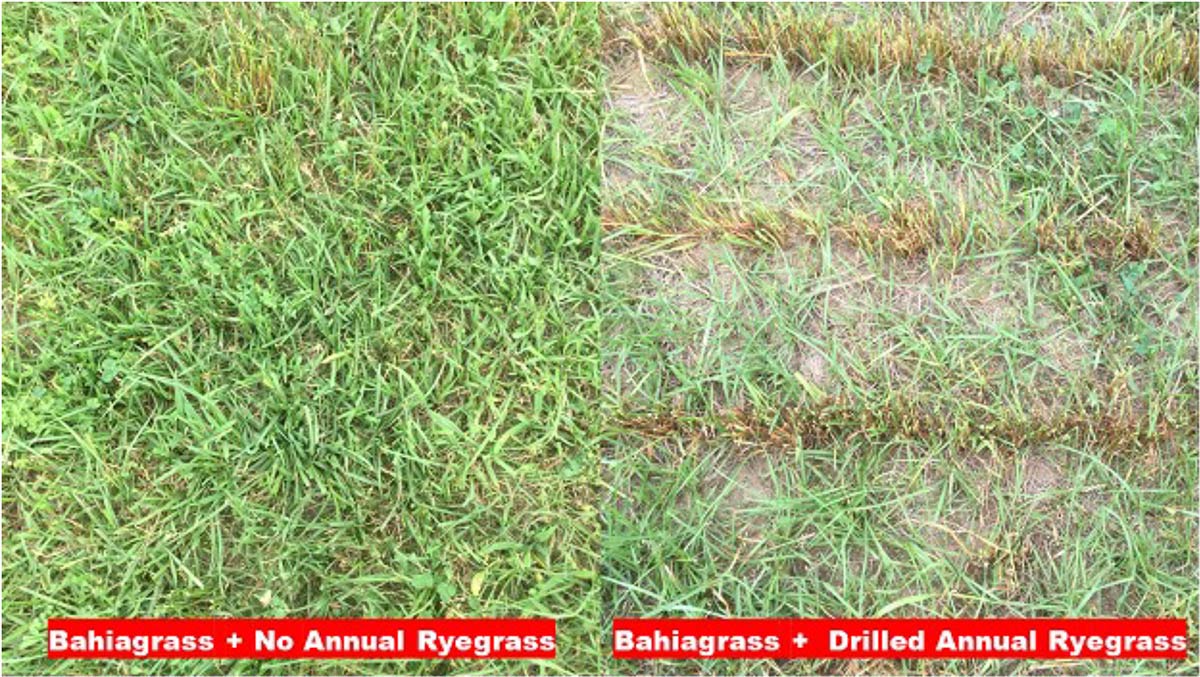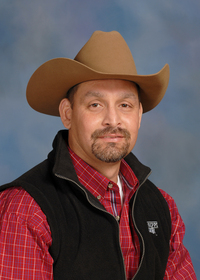Annual Ryegrass—Staple for Winter Grazing in the South
Characteristics and Traits – Annual ryegrass (commonly known as “Italian” ryegrass) is an annual cool-season grass that has been the backbone of the stocker cattle industry in the southern USA for many decades. It is reliable and versatile with a shiny, green appearance. It has tolerance to a wide range of soil types, cold, disease, including pH (a pH of 5.8 to 6.5 is preferred). Although it is known to be a non-spreading bunch grass, it is also known for being a quick grower under ideal weather conditions. It is known to outperform small grains in wet soil conditions. The shallow but still dense root system of annual ryegrass is a soil builder system and help prevent erosion by increasing water infiltration and enhancing soil tilth. One of the disadvantages is that annual ryegrass performance decreases un-der or extended periods of high (October-December) or low temperatures (early January to mid-February) depending on the location (Fig. 1). Another disadvantage is that rust can also be an issue.

Types of Annual Ryegrass – Plant selection and breeding has helped to improve seed production, forage yield, and nutritive value by developing two main types of annual ryegrass: diploid and tetraploid. Diploid varieties tend to have narrow leaves, more tillers per plant, seed size is smaller, and lower water content per cell which could translate into higher dry matter yield per pound of feed and higher energy. As a result, diploid varieties form a dense stand that is more competitive with weeds and can handle lower fertility and wetter conditions. Tiller-ing also helps protect stands from animal trampling and weed competition. The stands tend to be more persistent and withstand heavy grazing scenarios.

Tetraploid varieties have wider leaves and larger seed size with higher water content, and they do not tiller as much as the dip-loid varieties. Due to the higher ratio of carbohydrates (sugars and starches) to fiber found in the tetraploid varieties, they could be more palatable to livestock and therefore, improve intake and rumen function. However, keep in mind that tetraploids varieties can have higher water content, cattle can fill up fast, leading to lower intake compared to diploid varieties. Tetraploids could also have a slower recovery than diploids depending on environmental conditions and grazing management. Due to lower tiller density, tetraploids could make a good choice for with clovers or other small grains due to the slower and less aggressive recovery. Tetraploids could also make a good choice when interseeding summer perennial pastures like bahiagrass and bermudagrass because less tiller density can let these grasses green up earlier in the spring compared to diploids.

If you cannot decide on which type of annual ryegrass to plant, then a blend could be an ideal choice. A blend could provide diversity and production stability as the pasture faces variable weather and grazing management conditions. This approach could provide the strong tiller growth and standability of the diploids combined with the leafiness and increased sugars of the tetraploids. Producers tend to use both tetraploid and diploid varieties across the state. However, data collected over the last eight years at Mississippi State University have shown very little yield advantage of tetraploids over diploids (Fig. 2). This is the time of the year that producers should start inquiring about seed availability and seed cost. The longer you wait to be planting time, the lower the seed supply and higher the cost seed due to supply and demand. Tetraploid varieties tend to have a higher establishment cost compared to diploids since bigger seed and higher seeding rates. To determine the suitability of annual ryegrass in your area, please visit the Mississippi State Annual Ryegrass Variety Testing information here.
Establishment – Annual ryegrass can be established in the fall using different methods such as drilling in a prepared seedbed, direct sod-seeding with a no-till drill in warm-season perennial grass pastures or broadcasting (overseeding) the seed. It is important to note that planting with a drill will require lower seeding rates per acre than broadcasting as long as the drill is well-calibrated. Seed establishment should be based on your forage needs. A study conducted at Mississippi State indicated that over four-years, planting annual ryegrass into prepared seedbed can provide earlier grazing and more grazing days per acre (Fig. 3). A two-year study also indicated a delay of 4 to 6 weeks in grazing potential when annual ryegrass was drilled into a bermudagrass sod. Planting into a prepared seedbed from mid-September to early October could provide the best opportunity to achieve early grazing. A three-year study conducted at LSU also indicated that planting winter forage into a prepared seedbed could provide higher seasonal forage production relative to other seeding methods. The study indicated a 55% higher forage production for annual ryegrass when planted in a prepared seedbed compared to a bermudagrass sod (Cuomo and Blouin, 1997; Eichhorn, 1997). Despite these findings, it is important to keep in mind that planting annual ryegrass too early can make it more susceptible to armyworm damage and gray leaf spot dis-ease (blast). Planting into a warm-season perennial pasture can have a delay in grazing potential (Fig. 4) or green-up of your warm-season perennial grasses (Fig. 5).

Fertility – Optimum forage production de-pends on a sound soil fertility program. It is recommended to get a soil sample and obtain fertility recommendations for the target monoculture or mixed species. Annual ryegrass will have optimal growth at a soil pH of above 6.0, especially if annual clovers are incorporated in the grazing program. Phosphorus (P) and (K) potassium can be applied at planting per soil testing recommendations. In a prepared seedbed, the first nitrogen (N) application should occur when the grass has germinated, and it is about two inches tall. In a sod-seeded pasture, nitrogen application should be delated until the summer perennial grass (bermudagrass or bahiagrass) is dormant to avoid new growth and competition. The second application in annual ryegrass should occur after the first grazing period and a third application should occur in late March or early April if necessary. Do not exceed more than 40 to 50 units of N per acre per fertilization cycle unless there is the possibility of baleage production in the spring.

How Many Acres of Annual Ryegrass Should I Plant for Grazing? - Determining how many acres to plant will depend on the type of livestock and the local weather conditions. Generally, a well-established pasture of annual ryegrass can be stocked with 800 to 1,200 lbs of body weight per acre (1.5 to 2 - 600 lb calves/acre) with proper moisture and proper fertilization. These are just guidelines and stocking rates might be lower or higher depending on weather conditions, fertilization, and management. Keep in mind that forage production could be limited by cold, short, and cloudy days.
Upcoming Events
-
August 25, 2020— Webinar: Developing Efficient Winter Grazing Systems; 6:00 PM—7:00 PM CST
For upcoming forage related events visit: http://forages.pss.msstate.edu/events.html



